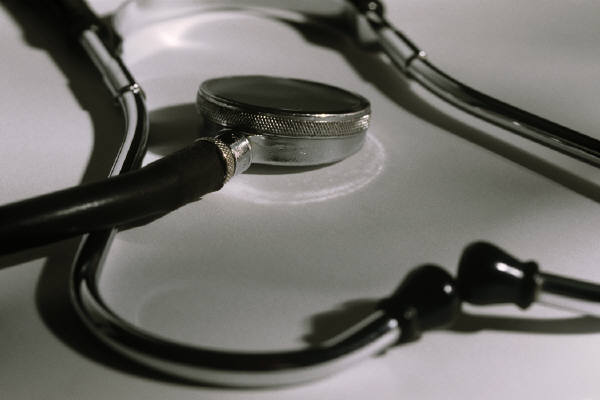Dispatch
In order to cope with the variability of the challenge it is important to allow the practitioner to adapt their treatment to suit the need. Allowing freedom to move within guidelines will permit the treatment to be tailored to the individual situation. It is not sufficient merely to remove the direct control unless the practitioner is well equipped to arrive at an appropriate decision and can verify that the decision was correct at a later date. Key elements of such a decision are a depth of knowledge and experience coupled with a process of review as well as the critical thinking ability that we call judgement.
The system that exists and has functioned successfully in South Australia for six years relies heavily on an enhanced level of education coupled with a regular process of educational clinical reviews.
The new educational approach to prehospital care providers will ensure that there is a thorough understanding of the principles and details of pathophysiology that relates to prehospital emergency care. The method of education will emphasize problem-solving and lateral thought as much as the simple acquiring of facts.
In order to achieve selection for this
program a candidate will need to demonstrate the ability to consider problems from a wide
perspective and evaluate differing evidence and schools of thought before arriving at an
opinion. This will be demonstrated through a case study and if successful with lead to an
interview, which will confirm the characteristics demonstrated and specifically look for
an appropriate attitude to the role. Excessive aggression and overly dogmatic approaches
to issues will not be sought in this selection process. Assessing attitudes at an
interview is difficult, as it is a subjective assessment. The independent opinions of four
panel members will be utilized together with an assessment from the candidate's own work
team.
Education of the successful candidates will be conducted in a relatively small group using
an interactive teaching style. The education will equip the care provider with the
necessary depth of knowledge upon which to make a decision and the problem-solving
approach to care that will enable the knowledge to be utilized. Controlling the teaching
of facts is relatively straight forward and is dependent upon the curriculum and the
stated depth of understanding required. The style of teaching that will develop
challenging and inquisitive thought processes is much harder to describe and control.
The education process will be started in the course but will be continued through a series
of regular educational case reviews. These educational case reviews will allow the care
provider to continue to learn and be challenged. They will allow modification of practice
and feedback to both care providers and medical advisers involved in the program. The
process will be of peer review and support rather than on authority and audit. The
education audit as they will be called will be the backbone of this system and without
them this style of care provider education will not work.
The most valuable asset in the organization is a
mistake that is acknowledged and shared as a learning process. In order to establish a
culture of trust about sharing mistakes and learning from them it will be necessary to
change the whole culture of the organization.
Organizational structure is an important aspect to providing this style of advanced
clinical care. It has taken about five years to shift the focus to a patient-focused
organization. Within this framework it will be possible to construct a supportive
education audit system.
Rsearch on a micro scale will be the currency of clinical debate. Evidence and logic will,
therefore, be valued by all members of the organization. The next step in improving
patient care and improving the professional behaviour will be the development of a
research base within prehospital care. Attitudes and abilities learned in the new
education program will form a base upon which research can be taught and will develop.
Objective measurement of the success of a system that empowers clinical practitioners is
always going to be an issue. The question of whether the changes have truly benefited the
patient and whether the changes were enacted on behalf of the patient or the practitioner.
It would be fair to say that the motivation for change comes from both the direct patient
need and the need for the practitioner to develop.
The benefits of the system will be demonstrated in the immediate effect on patient care
and in the development of a truly professional prehospital care system which will deliver
advanced in patient care at a later date.With the introduction of autonomous clinical
practitioners who work within a system of suggested guidelines and educational review, a
new level of patient care is possible. A practitioner operating in this new system will
tend to conform to accepted guidelines because they make sense and are readily explained,
rather than because it is an imposed system. On calls where the required intervention does
not conform to a simple situation then the autonomous care provider is equipped with both
the knowledge and the judgement skills to deal with the situation.
The wheel would appear to have come full circle. In the current "do little"
system, the medical role is to provide advice as to the appropriate treatment while the
detail of management is left up to the individual practitioner. In the new model the role
of the medical input will be to educate as to the most appropriate current medical
management of the situation and the underlying rationale behind that management. The
actual implementation will be, once again, the responsibility of the prehospital
professional.
Much of prehospital medicine is based upon the knowledge base of hospital clinical
medicine. There are, however, some areas that remain very poorly researched and
understood. Further development of the true professional prehospital care provider will
allow these gray areas to be challenged and our management to be adjusted appropriately.
- Dr. Hugh Grantham, Medical Director, South Australia Ambulance Service,
July 1999

Autonomous Practitioners